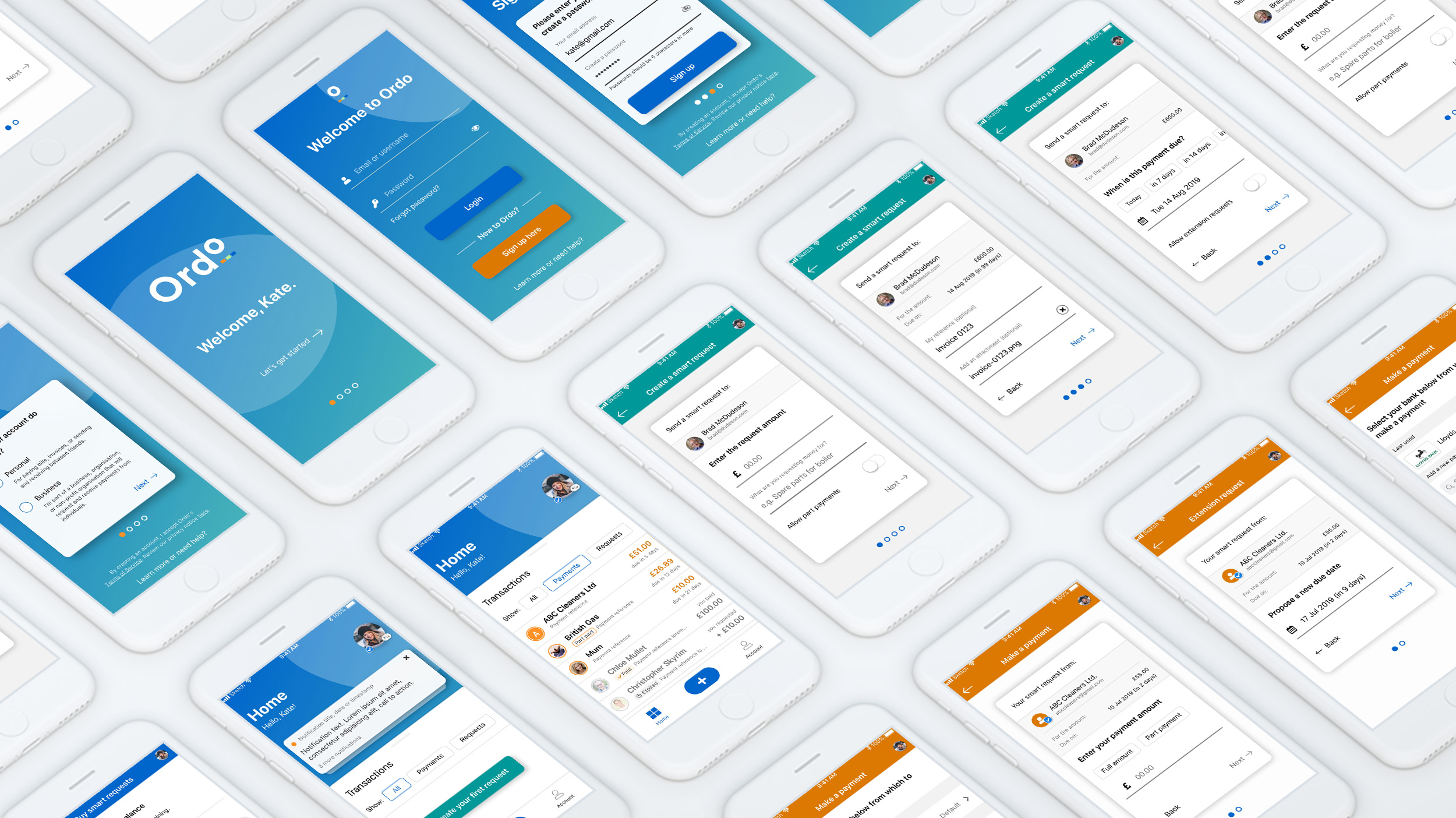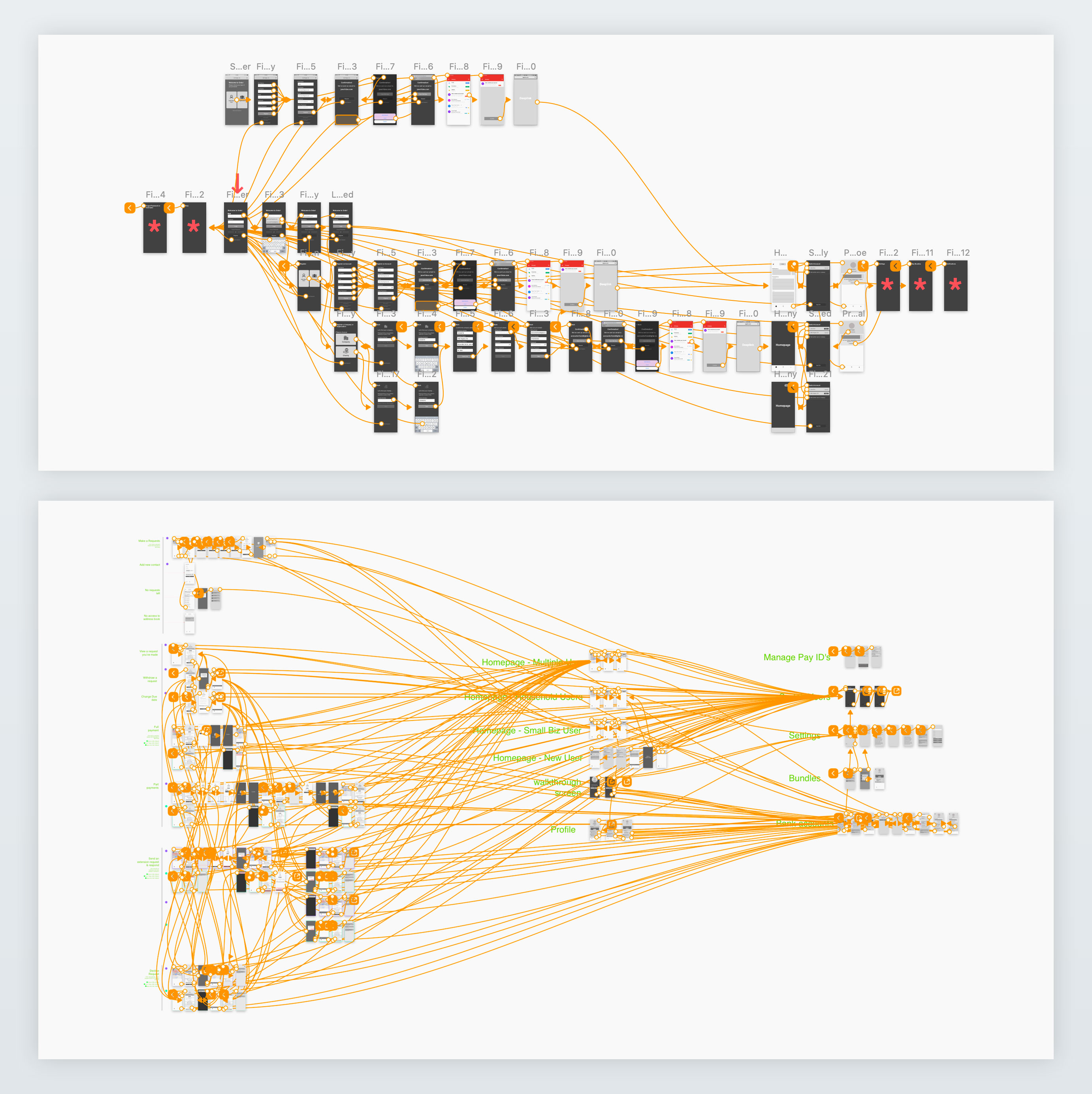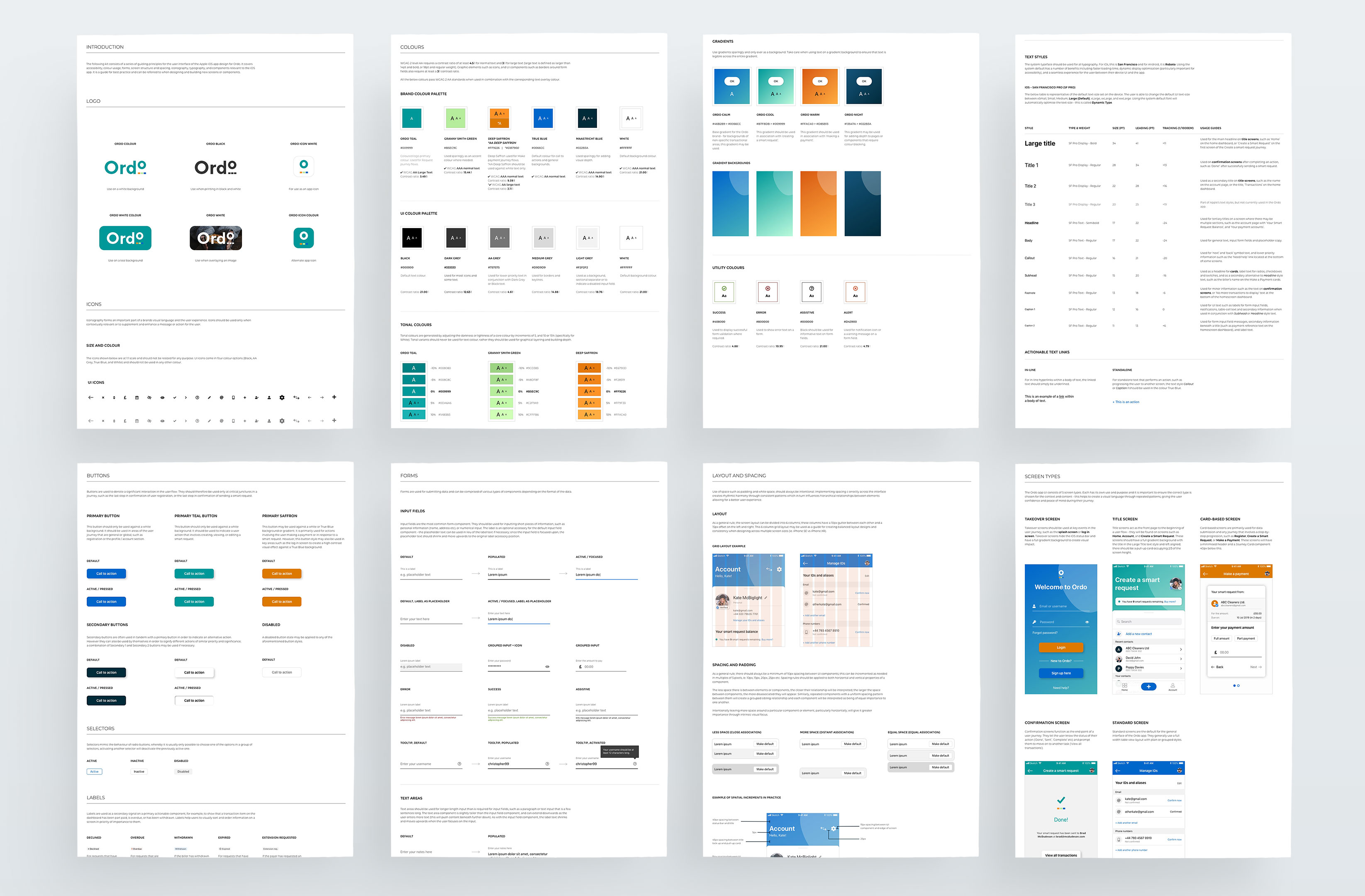Ordo is a fintech start-up designed to simplify peer-to-peer payments, allowing users to send and receive money securely without sharing sensitive financial details. The app also provides a centralised view for managing payment requests and receipts.
Biglight was engaged to help Ordo refine its product-market fit through a comprehensive UX strategy. This involved conducting in-depth user research, mapping user journeys, and iterating on the product’s core experience through prototyping and testing. Alongside UX/UI design, we also supported branding efforts and marketing asset creation to ensure a cohesive identity across all touchpoints. Our challenge was to create an intuitive digital experience that was both secure and easy to understand while aligning with the fintech industry’s regulatory requirements and best practices.


As the UI/UX design team, our role was to translate user needs into a seamless digital experience. Our process included:

Ordo secured funding from Nationwide’s £50m venture fund following the development of the MVP prototype. The app successfully launched on the Apple App Store in March 2020 and quickly gained traction in the market. The foundational design system established during the project enabled future scalability and iteration, ensuring a strong basis for long-term growth. In 2025, Ordo was acquired by Neonomics, reinforcing its continued impact and value within the fintech ecosystem.
Early usability testing highlighted the importance of strong user education and onboarding to improve adoption. Running parallel design and development workflows proved to be a viable, though challenging, approach that significantly accelerated iteration and deployment. Establishing a scalable design system from the outset ensured long-term consistency and facilitated future growth. Additionally, the success of Ordo—demonstrated through its funding and eventual acquisition—underscored the importance of industry validation in driving a fintech product’s success. These insights emphasise the need for clear user communication, structured design systems, and agile collaboration between design and development teams in future projects.